Green architecture – Montecito Residence, Santa Barbara
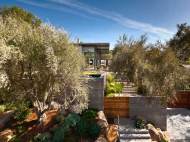 Located in the hills of Santa Barbara, the Montecito Residence is a great example of opened design with a large quantity of structural steel and glass, whose noncombustible nature proves useful in a fire-prone area. The house was recently awarded with the Merit Award in the Innovative Design in Engineering and Architecture with Structural Steel program (IDEAS2) for the use of exposed structural steel and sustainable features practiced in its design.
Located in the hills of Santa Barbara, the Montecito Residence is a great example of opened design with a large quantity of structural steel and glass, whose noncombustible nature proves useful in a fire-prone area. The house was recently awarded with the Merit Award in the Innovative Design in Engineering and Architecture with Structural Steel program (IDEAS2) for the use of exposed structural steel and sustainable features practiced in its design.
Designed by Barton Myers Associates Inc., the Montecito Residence is built on a 0.405-hectare (1-acre) site in an environmentally sensitive habitat with dense vegetation and large boulders. Part of the sandstone boulders on the site were saved, melding the house with its coarse site, but the south-facing main residence doesn’t attempt to blend with its surroundings.
The main residence has 312 square meters (3,360 square feet) and it is broken up into two wings which separate the living, dining and kitchen areas from the bedroom, bathrooms and library areas. Aside providing privacy, the separation of wings provides acoustical isolation between the areas. Additions to main residence are a 46 square meters (500 square feet) garage, a pergola, a 15-meter (50-foot) lap pool, and a 66 square-meeter (715-square-foot) guesthouse.
The intention behind the design strategy is tectonic design research that creatively envisions a flexible prototype for mass-produced housing using steel construction from Anvil Steel Corporation and standardized off-the-shelf industrial components. Since a majority of all steel is manufactured from scrap metals from recycled automobiles it is a “green” material.
The glass-and-steel Montecito Residence is what its architects call soft prefabrication which features personalization of off-the-shelf parts, such as 2 ½-inch steel panels, a metal deck roof, and motorized overhead doors. The offsite manufacturing of structured-steel materials ensured less construction waste than the typical amount produced in wood-construction projects.
The overhead doors are one of the interesting features of the home, and they can be opened to remove the boundary between the interior and exterior. When fully open, the doors rest under the metal deck roof. Although they might not be as good in other areas of the world, the overhang doors are functioning great in the mild Santa Barbara climate.
In spite the fact it has a lot of glass, the house complies with California’s Title 24 energy code. The windows and doors enable abundance of natural daylight and provide plenty of natural ventilation. The natural ventilation eliminates the need for an air-conditioning system, and poured-in-place concrete floors feature radiant heating used in the cold days of the year.
With photovoltaics on the garage and solar thermal collectors over the library, the home owners are secured with 95 percent of the needed energy. The owners claim electric bills are less than $10 a month.
The garden design is Japanese-influenced, and the landscaping was done by Rios Clementi Hale Studios. They also added decorated the interior of the house where they brought warm to contrast with the industrial finishes.

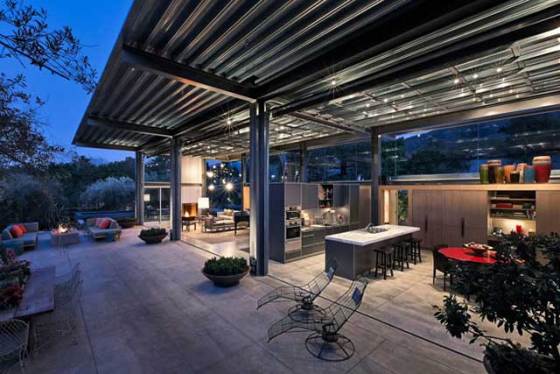
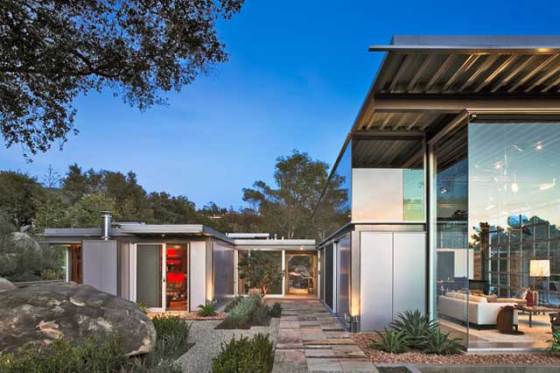
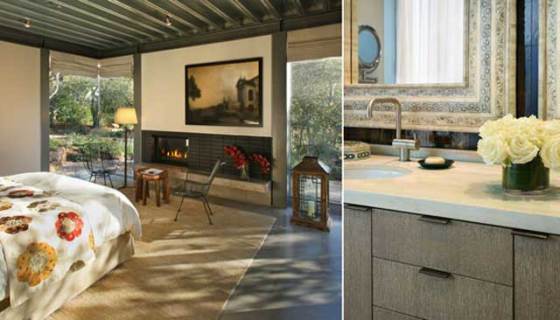
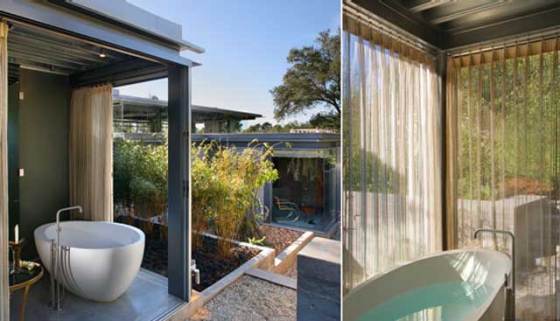








I’m so glad there is a website focused on green architecture with a lot of details about sustainable features of buildings.
The home is modern, yet it seems cozy. In my opinion, it could use more wood instead steel for additional warmth in some areas.
Who made the overhead doors?